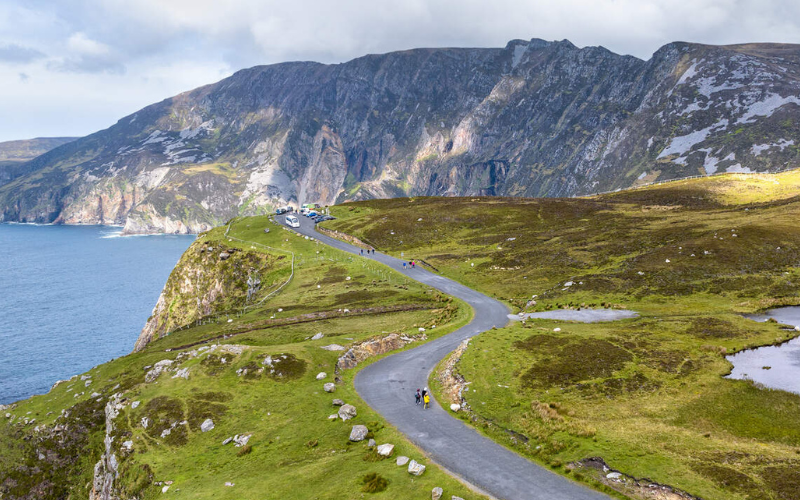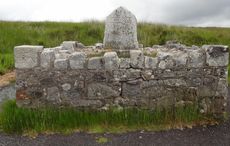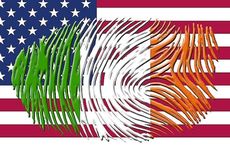Now they want to blame the Irish for all of the fighting and violence we see in hockey?
Okay, so it’s not quite that simple. But there’s a theory going around that the Irish played a central role in the evolution of hockey, and in particular the sport’s infamous acceptance of violence.
It’s been a tough week for hockey fans in the New York area.
First the New York Rangers – led by Irish American captain Ryan Callahan and Massachusetts-born star Brian Boyle – were bounced from the Stanley Cup playoffs after a stellar season as arguably the best team in the league.
Then, in the Stanley Cup finals, the New Jersey Devils went down three games to none to the Los Angeles Kings. The Devils fought back, winning two games, before getting spanked 6-1 in Game six, giving the L.A. Kings their first hockey title ever.
Either way, it is worth noting that the Stanley Cup battle was fought between two American teams.
This even though hockey is the quintessential Canadian sport.
Not only that, but it is the only sport in which, even today, fighting plays a more or less acceptable role.
Yes, whenever two players throw down the gloves and start hammering each other, they will face a penalty. But not before someone is declared a winner, and both understand they will probably be fighting again someday soon.
The question has lingered: Why does hockey have this casual attitude towards fighting? That’s where the Irish come in.
Those attempting to untangle this relationship between hockey and fighting inevitably go back to the roots of the game. The most intriguing theory of late comes from author and New Yorker magazine writer Adam Gopnik.
Gopnik, a Canadian, suggests that fighting on the ice was a result of broader ethnic tensions in Canada.
“The first organized hockey games were played (in Montreal) in 1875 by English-Canadian rugby players looking for a winter sport,” The New York Times noted back in December, in a report about Gopnik’s theory.
_________________
Read More:
Ireland’s youngest Olympic medal prospect - 19-year-old swimmer Grainne Murphy
BiG 12 looking like a nice fit for Irish
_________________
“For the first 20 years or so, the players were mostly members of Montreal’s English and Scottish elite; French Canadians joined in the 1890s, when the Catholic Church in Quebec started to drop its resistance to sports. Montreal’s Irish, as English-speaking Catholics, occupied a kind of middle ground between the Protestant Anglo-Scots elite and the Catholic French majority.”
Naturally, international politics manifested itself on the ice.
The Times noted, “They all had their own hockey clubs, some of whose names are still etched on the Stanley Cup: the Scottish, represented by the thistle on Montreal’s flag, had the Victorias; the English, with the rose, had the Montreal Amateur Athletic Association; the Irish had the Shamrocks; and the French, of the fleur-de-lis, had the National and the Montagnards.
“The Shamrocks often allied with French clubs against the English and the Scottish in disputes over who would be allowed into the top leagues.”
And so, since these ethnic groups hated each other on the national stage, it makes a certain kind of sense that if you handed them sticks and had them skate at each other at high speeds, they might start brawling.
On the other hand, others believe Gopnik’s theory might be a little simplistic.
Historian Michel Vigneault is considered the first scholar to link hockey violence with Canada’s ethnic tension. He did so in his 2001 Laval University doctoral thesis.
Now a teacher at the Université du Québec à Montréal, Vigneault has suggested that the actual roots of hockey violence might lie in lacrosse. This was Montreal’s most popular sport in the mid-to-late 19th Century.
“In lacrosse then, fights were legendary,” Vigneault told the Times. “Most of the hockey players were lacrosse players then.”
Others have even suggested, as the Times notes, that “ancient Gaelic field games Irish hurling and Scottish shinty…sometimes played on ice, contain the seeds for hockey’s violence.”
Perhaps. Though that’s no comfort, right now, to Devils and Rangers fans.
(Contact “Sidewalks” at tomdeignan@earthlink.net or facebook.com/tomdeignan)




Comments